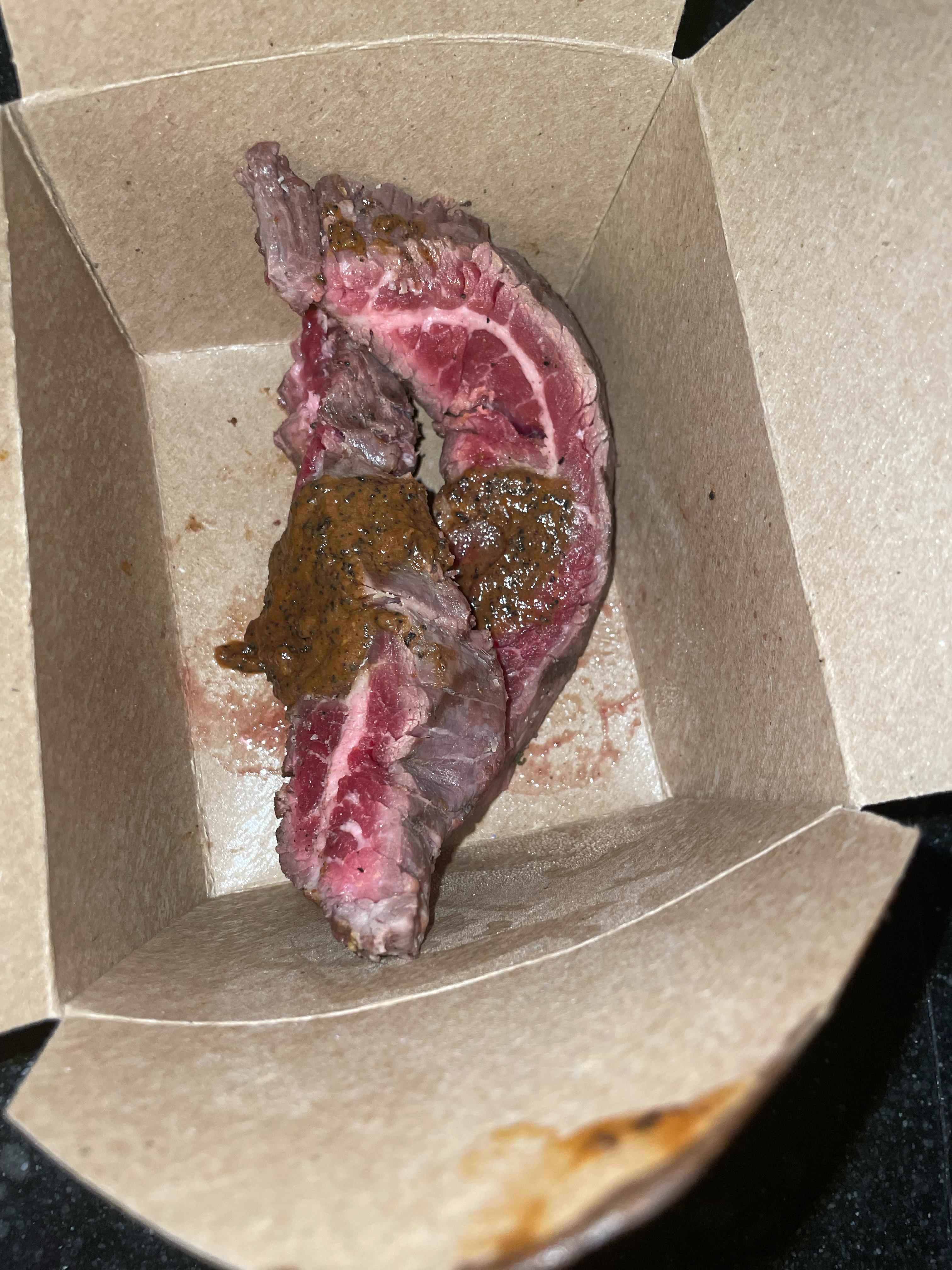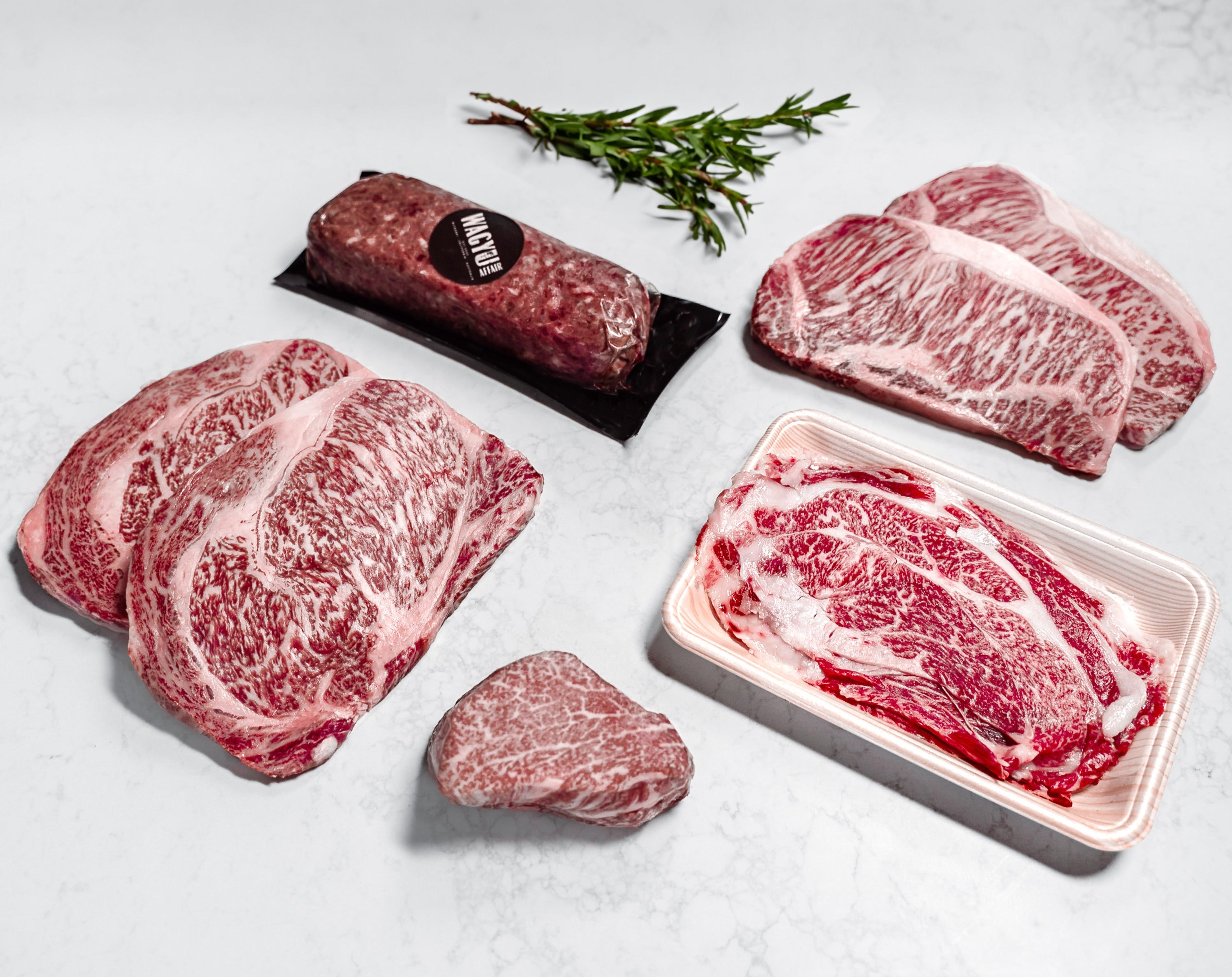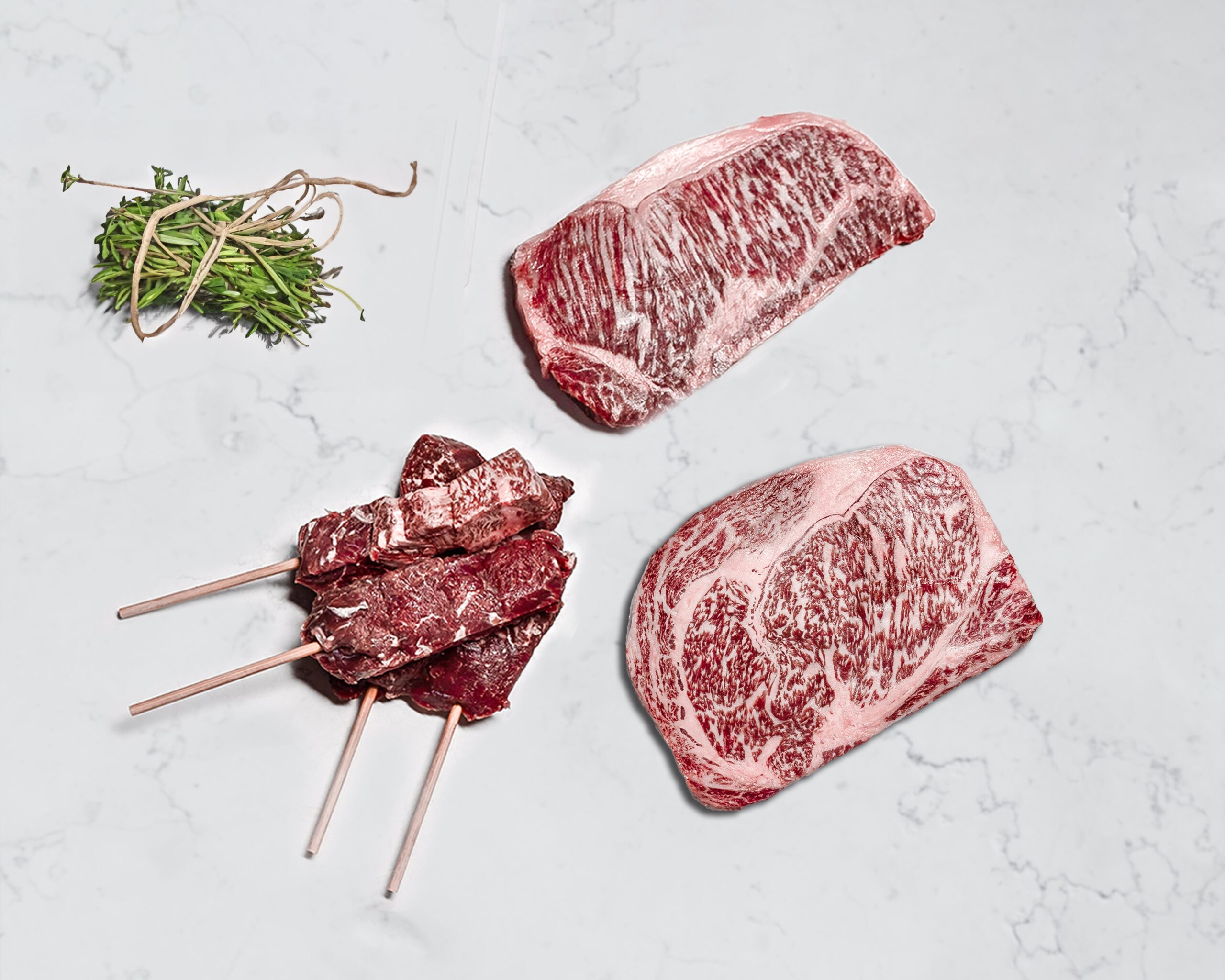
Yes, high-quality Wagyu beef can be safely eaten raw when properly sourced from reputable suppliers, handled with strict hygiene practices, and prepared correctly. The rich marbling and superior texture of Wagyu beef make it an excellent choice for raw preparations like tartare and sashimi, though food safety precautions must always be observed.
| Aspect | Eating Wagyu Raw | Eating Wagyu Cooked |
|---|---|---|
| Taste Experience | Delicate, butter-like, pure beef flavor | Rich, intensified umami flavor |
| Texture | Silky, melt-in-mouth consistency | Tender but more structured |
| Safety Considerations | Requires certified sources, proper handling | Heating eliminates most pathogens |
| Best Cuts | Tenderloin, sirloin, ribeye | All cuts suitable |
| Preparation Complexity | Higher (requires special handling) | Lower (more forgiving) |
Safety Guidelines for Consuming Raw Wagyu Beef
- Source verification: Purchase only from reputable suppliers with proper certification
- Freshness check: Use within 1-2 days of purchase for optimal safety
- Temperature control: Keep refrigerated at or below 40°F (4°C) until preparation
- Clean preparation: Use sanitized cutting boards and utensils dedicated to raw meat
- Visual inspection: Ensure meat has vibrant color without off-odors
- Risk awareness: Not recommended for pregnant women, children, elderly, or immunocompromised individuals
Understanding Wagyu Beef
Wagyu beef comes from specific Japanese cattle breeds known for their genetic predisposition to intense marbling. This intramuscular fat creates the signature texture and flavor that makes Wagyu one of the most prized beef varieties worldwide.
Wagyu Grading System
The Japanese Wagyu grading system evaluates beef on:
- Marbling (BMS): Scored from 3-12, with 12 being the highest
- Meat color and brightness: Rated on a scale from 1-7
- Fat color and quality: Rated on a scale from 1-7
- Firmness and texture: Rated on a scale from 1-5
A5 Wagyu represents the highest possible quality, with exceptional marbling and texture.

Raw Food Consumption
Safety Concerns with Eating Raw Meat
Eating raw meat like sushi sashimi and Wagyu beef can be an exciting culinary adventure. But it’s also important to know the safety issues that come with it. Here are a few risks to be aware of:
- Bacterial Infections: Raw meat can hold dangerous bacteria like E. coli Salmonella and Listeria. These germs can cause foodborne illnesses if you eat them.
- Parasites: Some meats might come with parasites that can create serious health problems if you eat them raw.
- Quality Control: Not every cut of meat is right for eating raw. It’s really important to get it from a trusted source.
To keep these risks down you should:
- Buy from reliable suppliers that follow strong health and safety rules.
- Make sure the meat is fresh and has been handled with care.
- Always check your own health situation since raw meat might not be safe for pregnant women little kids or anyone with a weak immune system.
Cultural Practices Around Raw Meat
Around the world people appreciate the unique flavors and textures that raw meat can add to a meal. Japan is a leader in enjoying raw dishes blending delicacy with dining art.
Some common Japanese raw meat meals are:
- Tataki: Lightly seared outside but raw inside.
- Sashimi: Thinly sliced raw fish but Wagyu can also be served this way.
- Yakiniku: A style that combines raw and grilled elements letting diners cook meat to their liking right at the table.
Japanese food honors these practices as not just cooking but as a cultural heritage inviting folks to try flavors that are often lost when cooking. For many enjoying raw dishes isn’t just about taste; it’s about connecting with a rich tradition that values quality ingredients.

Can Wagyu Beef Be Eaten Raw?
What Makes Wagyu Beef Great for Raw Eating
Wagyu beef shines when it’s enjoyed raw truly a gourmet experience. Some key features make it perfect for this culinary journey:
- Richly Marbled Fat: Wagyu beef is known for its extensive marbling which gives it both flavor and melt-in-your-mouth tenderness. This fat structure really brings out the creamy texture in raw dishes.
- Top-Notch Quality: When picking Wagyu for raw meals certification matters. Authentic Japanese Wagyu usually has a grading system that shows its quality making it safer and more enjoyable to eat raw.
- Freshness and Handling: Proper handling and storage are key. Freshness is crucial since high-quality Wagyu should come from trusted suppliers who follow strict sanitary practices.
Eating Wagyu raw isn’t just about flavor; it’s a dive into texture and a celebration of food culture.
How to Prepare and Serve Raw Wagyu Beef
Getting Wagyu beef ready for raw dishes is an art that boosts its subtle flavor. Here are some popular ways to serve it:
- Wagyu Beef Tartare: Finely chop high-quality Wagyu mix it with ingredients like capers shallots and a dash of mustard. Serve it chilled with a quail egg yolk on top and sprinkle with fresh herbs.
- Wagyu Sashimi: Cut fresh Wagyu into thin slices serve with soy sauce and wasabi showing off its natural taste. The trick is to cut against the grain for the best tenderness.
- Grilled Rare Option: If you’re not so sure about eating it completely raw some places let you quickly sear your Wagyu on a grill at the table turning it into a semi-raw delight.
Pair these dishes with a nice sake or a chilled white wine to enhance the experience balancing the richness of the beef. With its special qualities and the right approach raw Wagyu offers an unmatched culinary adventure.
Benefits and Risks of Eating Wagyu Beef Raw
Nutritional Gains
Eating raw Wagyu beef can bring a bunch of nutritional perks making it a solid option for those who care about health. Here are some big benefits:
- Packed with Healthy Fats: Wagyu beef has lots of monounsaturated fats and omega-3 fatty acids which help your heart. These good fats can lower bad cholesterol and support overall heart health.
- High-Quality Protein: It’s a great protein source giving you what you need to support muscle growth and repair making it perfect for fitness lovers.
- Vitamins and Minerals: This fancy beef is loaded with key nutrients like B vitamins (like B12 and niacin) iron zinc and selenium that are vital for keeping your energy up and your immune system strong.
In moderation raw Wagyu beef can fit into a delicious and nutritious diet.
Health Risks and Cautions
While there are benefits eating raw meat does have health risks that you need to keep in mind:
- Bacterial Issues: A big worry with raw meat is getting bacterial infections like E. coli or Salmonella. Even though Wagyu is made under strict hygiene standards it’s still important to be cautious of possible contaminants.
- Parasites: Raw meat might carry parasites that can lead to tummy troubles so it’s important to get high-quality cuts from trusted sources.
- Health Considerations: Pregnant women little kids and people with weak immune systems should skip raw meat because of the higher risk of foodborne illnesses.
To have a safe experience always buy Wagyu from trusted suppliers known for food safety. How you prepare and handle it is really important to lessen risks letting you appreciate the goodness of raw Wagyu while staying safe.

Recipes with Raw Wagyu Beef
Wagyu Beef Tartare
Wagyu beef tartare is a dish that’s all about highlighting the rich texture and flavor of raw Wagyu making it a hit with foodies. Plus it’s surprisingly easy to make. Here’s how you can whip up your own Wagyu beef tartare at home:
Ingredients:
- 8 oz of top-quality Wagyu beef finely diced
- 1 small shallot minced
- 1 tablespoon of capers chopped
- 1 teaspoon of Dijon mustard
- 1 teaspoon of Worcestershire sauce
- Salt and pepper to taste
- Fresh herbs like chives or parsley for garnish
- Optional: quail egg yolk for topping
Instructions:
- First make sure your Wagyu beef is fresh and comes from a good source. Chill it for easier cutting.
- In a bowl mix the minced shallot capers Dijon mustard and Worcestershire sauce.
- Gently fold in the diced Wagyu and mix until everything’s well blended. Season with salt and pepper to taste.
- Serve the tartare on a chilled plate garnished with herbs and if you like add a delicate quail egg yolk on top.
This dish makes for a classy appetizer that will amaze friends and family with its elegance and flavors.
Wagyu Beef Sushi
Just picture sushi made with melt-in-your-mouth Wagyu beef. Wagyu sushi is another fantastic recipe that takes traditional sushi to new levels.
Ingredients:
- High-quality Wagyu beef sliced thin
- Cooked sushi rice
- Nori sheets
- Fresh wasabi
- Soy sauce for dipping
Instructions:
- Cook the sushi rice based on package instructions seasoning with rice vinegar once it’s done.
- Take a nori sheet and spread a nice layer of sushi rice leaving a bit of room at the top.
- Place thin slices of Wagyu beef on the rice adding a bit of fresh wasabi for an exciting kick.
- Roll the nori tightly sealing the edge with some water.
- Cut the roll into bite-sized pieces and serve with soy sauce.
These recipes not only showcase the amazing quality of Wagyu beef but also let home cooks dive into the rich culinary history of Japan. Whether you’re enjoying the rich tartare or the delicate sushi each bite tells a tale of flavor and skill.

Cultural Views on Raw Wagyu Beef
Japanese Cuisine and Raw Meat
In Japan the art of eating raw meat especially Wagyu is deeply ingrained in culinary culture. Dishes like Beef Tataki and Carpaccio let diners appreciate the lovely marbling and soft texture that Wagyu is known for.
- A Culinary Experience: Eating raw Wagyu is not just a meal; it’s a journey connecting you to the land where these cattle are grown. In Japan people take pride in their farming methods ensuring each cut of Wagyu meets high quality standards. This effort is reflected in the deep flavors and incredible textures making raw dishes a sought-after choice among food lovers.
- Honoring Ingredients: The Japanese way of enjoying food appreciates the true character of the ingredient itself. Serving Wagyu raw allows its real essence to shine inviting diners to immerse in its quality. Freshness is key and restaurants serving raw Wagyu always source from trusted suppliers and follow strict food safety rules.
International Dishes Using Raw Wagyu Beef
All around the world chefs are incorporating raw Wagyu beef into creative dishes that highlight what makes it unique.
- Wagyu Beef Sushi: Outside Japan sushi places often whip up Wagyu sushi a fun twist on traditional sushi. Thin slices of Wagyu with sushi rice and nori give diners a taste of luxury with their meal.
- Tartare and More: Food lovers are also figuring out how to include raw Wagyu in dishes like tartare where it’s finely chopped and blended with spices. This dish is gaining popularity in upscale dining highlighting how Wagyu transcends cultural differences.
In both Japan and around the globe raw Wagyu beef continues to capture hearts inviting diners to appreciate not just its amazing taste but also the rich cultural stories tied to every dish.
Frequently Asked Questions About Raw Wagyu Beef
Is it safe to eat Wagyu beef raw?
Yes, it can be safe to eat high-quality Wagyu beef raw if it’s sourced from reputable suppliers who follow proper sanitation and handling procedures. However, consuming any raw meat carries inherent risks. The safety depends on the freshness, handling, and quality certification of the Wagyu beef. A5-grade Japanese Wagyu from certified suppliers is generally considered safer for raw consumption than lower grades or non-certified options.
What does raw Wagyu beef taste like?
Raw Wagyu beef offers a uniquely buttery, delicate flavor with subtle sweetness and umami notes. The high fat content creates a melt-in-your-mouth texture that’s silky and rich. Many describe the experience as more luxurious than other raw beef varieties, with the marbled fat dissolving at body temperature to release complex flavors without being overpowering.
Which cuts of Wagyu are best for eating raw?
The best Wagyu cuts for raw consumption include:
- Tenderloin (Filet Mignon) – Extremely tender with clean flavor
- Sirloin (Striploin) – Good balance of flavor and texture
- Ribeye – Rich marbling and flavor, though slightly firmer
- Top Round – Leaner option still suitable for tartare
The cut should be fresh from the center of the muscle, minimizing exposure to surface bacteria.
How should I store Wagyu beef that I plan to eat raw?
For Wagyu intended for raw consumption, follow these storage guidelines:
- Keep refrigerated at 32-38°F (0-3°C) in the coldest part of your refrigerator
- Store in its original vacuum-sealed packaging until ready to prepare
- Use within 1-2 days of purchase for optimal safety and flavor
- If freezing is necessary, use a deep freeze at 0°F (-18°C) or below, and thaw slowly in the refrigerator
- Once thawed, never refreeze Wagyu that will be eaten raw
Always use clean, sanitized utensils and surfaces when handling.
What’s the difference between Wagyu tartare and carpaccio?
The main differences between Wagyu tartare and carpaccio are:
| Wagyu Tartare | Wagyu Carpaccio |
|---|---|
| Finely chopped or minced raw beef | Paper-thin slices of raw beef |
| Usually mixed with seasonings and binders (egg yolk, mustard, capers, herbs) | Typically dressed with olive oil, lemon juice, capers, and Parmesan |
| Served as a mound or shaped portion | Arranged flat on a plate in a single layer |
| French culinary tradition | Italian culinary tradition |
Both preparations showcase the exceptional quality of Wagyu beef but offer different textural experiences.
Can I eat American Wagyu raw like Japanese Wagyu?
While American Wagyu can be eaten raw, it typically doesn’t offer the same safety assurance as Japanese A5 Wagyu. American Wagyu is a crossbreed of Japanese Wagyu and Angus cattle, resulting in excellent marbling but often under different regulatory systems. If consuming American Wagyu raw:
- Select only the highest grades from reputable suppliers
- Verify the farm’s handling practices and certifications
- Consider a light sear on the exterior for added safety
- Be particularly mindful of freshness and storage
Some connoisseurs prefer to use American Wagyu for cooked preparations while reserving Japanese Wagyu for raw dishes.

A Bergen County institution celebrating authentic Jewish cuisine since 1985. Our pastrami—brined for 14 days, smoked over applewood for 12 hours, and steamed to perfection—creates a melt-in-your-mouth experience that rivals Manhattan’s finest delis. Our rye bread is baked fresh daily using a century-old recipe from Poland. Featured in Food & Wine’s “Top 10 Delicatessens in America” and on Food Network’s “Best Thing I Ever Ate.” Chef Moshe Greenbaum, a third-generation deli master trained at the Culinary Institute of America, ensures every sandwich meets our exacting standards. No wonder our customers drive from three states away.

Leave a Reply